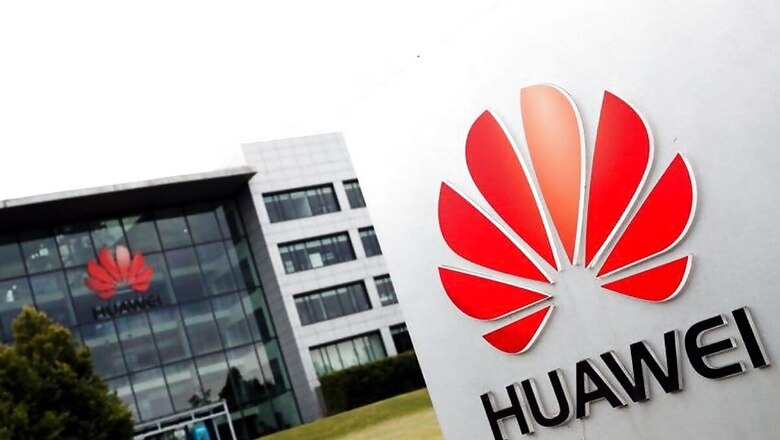
views
We can probably laugh at the reaction of the spokesperson of Chinese Embassy Counsellor Wang Xiaojian to India not permitting Chinese firms Huawei and ZTE to participate in its 5G trials. This amusing reaction is a cobbling together of a predictable set of words, pulled out from Beijing’s boring playbook, out of tune with the underlying reality, out of sync with growing perceptions, unaware of the global synching around ‘No China in critical infrastructure’: “The Chinese side hopes that India could do more to enhance mutual trust and cooperation between the two countries, and provide an open, fair, just, and non-discriminatory investment and business environment for market entities from all countries, including China, to operate and invest in India.”
The exclusion of Chinese firms in India’s 5G trials, as well as in future rollouts, was a future foretold. To imagine that India will open its most sensitive sector to intrusion from the Chinese Communist Party even as its People’s Liberation Army attempts to grab Indian territory is strategic hubris on Beijing’s part. To view India as its competitor is one thing; to bludgeon that idea into military action takes all discussions and negotiations beyond the pale of civil talks. Here, clubs and fists, tactics and manoeuvres are doing the talking. The only solution is for China to get out. To demand, or even expect, business as usual in these times is like China saying: Use Chinese firms, allow them to intrude into your countries, or else!
Those threats have gone past their use-by date. Xi Jinping wants to be feared by the rest of the world. It worked for a while. But now, even that fear is abating in direct proportion to his illusions of grandeur. Philippines Secretary of Foreign Affairs, Teddy Locsin Jr., articulated this in a 3 May 2021 tweet: “China, my friend, how politely can I put it? Let me see… O…GET THE F**K OUT. What are you doing to our friendship? You. Not us. We’re trying. You. You’re like an ugly oaf forcing your attentions on a handsome guy who wants to be a friend; not to father a Chinese province …” These pushbacks will increase. And with them Beijing and the grand supremacy of the Middle Kingdom will turn into a meme.
In its confused state of mind, which in turn is in a state of war within and itching to express it somewhere…anywhere… it seems the CCP has lost its ability to think. In particular, it is unable to read India. It is behaving as an aggrieved party, as though it is surprised by this policy ricochet of Beijing’s actions. For them, this is a diplomatic misdeed. For the rest of the world, this is the right reaction. For those tracking India’s China policy closely, this is a work in progress, a step in India’s evolving critical infrastructure policy with respect to China.
Critical infrastructure comprises those sectors whose destruction would adversely impact a country’s security, economy or safety. It requires the government to identify risks and vulnerabilities — natural (earthquakes or floods, for instance) or manmade (Chinese intrusion, for instance) — and be prepared for them. It is in this context that the exclusion of Huawei and ZTE from India’s 5G trials needs to be seen. In a line, the exclusion of Chinese firms from India’s 5G is a policy that can be informally called, No China 3.0. So far, there are three series of No China policy initiatives.
Series 1
No China 1.0 happened on 29 June 2020, when India banned 59 Chinese apps.
No China 1.1 happened on 28 July 2020, when it banned another 47 Chinese apps.
No China 1.2 happened on 2 September 2020, when India banned another 118 apps.
No China 1.3 happened on 24 November 2020, when it banned another 43 apps.
Series 2
No China 2.0 happened on 2 June 2020, when India banned Chinese firms from participating in highway projects.
Series 3.
No China 3.0 happened on 4 May 2021, with the exclusion of Chinese firms Huawei and ZTE from India’s 5G trials.
But this is not the end. There will be a Series 4, a Series 5, a Series 6…7…8… All of them will ensure No China in India’s critical infrastructure. These policy initiatives will have a four-part drafting. First, around physical critical infrastructure — that is, No China in India’s ports, energy, railways and defence sectors. Second, around virtual critical infrastructure — No China in India’s information technology, internet, broadband sectors. Third, around systemic critical infrastructure — No China in India’s banking and finance sectors. And fourth, around other areas of critical infrastructure — No China in India’s space and nuclear sectors; and emanating from the “Wuhan Virus”, the most important today: No China in India’s public health.
The exclusion of Huawei is, therefore, is subset of a larger policy stream. It is a work in progress, a continuum, with which India will protect its strategic sectors from assault by the CCP-PLA combine that has repeatedly made clear that it does not want India as a friend but considers it an enemy, a threat, an idea it fears and one that it seeks to end.
India is not alone in designing these policies. Given that China is in a state of war, first with itself within and therefore outside, we need to know the tools of tomorrow’s warfare. They will be fought not so much on ground or at sea as they will be in virtual spaces. Or, let’s say, the virtual will drive the physical — the tail has become larger than the dog and is wagging. The looming Cold War will, as Samir Saran articulates, really be a Code War:
With nearly all social, economic, and strategic interactions moving to the virtual and digital realm, states will race to “encode” their political values and technology standards into the algorithms and infrastructure that will govern our societies. This will certainly be a competitive process which will give birth to a persistent “code war”.
What makes Chinese companies entering India’s critical infrastructure dangerous are two outcomes. First, the intrusive nature of 5G technology. And second, China’s National Intelligence Law, Articles 7, 9, 12 and 14, of which turns every Chinese company and every Chinese citizen into a spy. This makes consumers, businesses and governments of all countries that use Chinese equipment vulnerable to intrusion by CCP and PLA.
That’s the reason why Australia banned Chinese firms from its critical infrastructure in August 2019, the UK banned Huawei in July 2020, the US in August 2020, and most of EU including Poland, Estonia, Romania, Denmark, Latvia, and Greece last year. India excluding Huawei from its 5G trials is a step in the same direction. And though the decision is independent, the alignment is clearly with the West.
That said, even if the rest of the world did not ban Huawei or Chinese firms, India must. If there is a collision with China, other countries are at a reasonable geographic distance to negotiate it. With India, there is a 3,488-km long border. India cannot, must not and will not allow Chinese intrusion into its critical infrastructure. There is too much at stake for India, and through India, for rest of the world. So, expect more such exclusions or bans, as one critical sector after another shuts doors to this party, the CCP, that’s visibly and irreversibly turning China into a rogue nation.
This article was first published on ORF.
Read all the Latest News, Breaking News and Coronavirus News here. Follow us on Facebook, Twitter and Telegram.



















Comments
0 comment